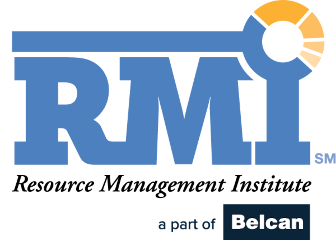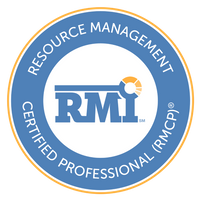Before investing in technology, product, project, or implementing a new process, the first question that comes to a CXO’s mind is – How will it benefit the firm?
Likewise, while formulating a resource management strategy, it is crucial to understand its value proposition. To answer the question, as resources are the most significant investments of any business, tapping into their maximum potential will help gain the best value out of them. Otherwise, if resources fail to generate any ROI (Return on Investment) for the firm, it will only escalate overhead costs and add to the bottom line.
Attributing to these factors, forming a systematic resource management strategy is beneficial as it will help businesses utilize the resources intelligently. Moreover, combining this strategy with a value-driven solution will provide the extra edge and help them stay profitable in the long run.
This article highlights how value-driven resource management benefits businesses and guarantees successful project delivery.
What is value-driven resource management?
Value-driven resource management is a comprehensive process that allows managers to leverage the talent of the resource pool to the maximum extent. Additionally, it also helps businesses reduce project resource costs, enhance billable/strategic utilization, bridge the skills gap proactively, and so on. All these practices enable timely delivery of the project and within budget. Moreover, value-driven resource management plays the role of a key catalyst in improving business profitability and sustainability.
In the following section, we shall discuss its most prominent business benefits:
How can value-driven resource management benefit businesses?
Reduces project resourcing costs significantly
Resource forecasting enables managers to foresee pipeline project demands well ahead of the curve. Thus, they get enough lead time to hire the right resources at the correct cost and avoid last-minute firefighting. Additionally, with centralized workforce visibility, they can utilize cost-effective global resources from low-cost locations without compromising the quality, thus minimizing resourcing costs.
Future-proofs workforce against market volatilities
As discussed earlier, effective forecasting provides foresight into the pipeline or future project demands. Resource managers can compare this demand against the existing capacity and proactively identify the skill gap. Following this, implement upskilling or training programs for the appropriate resources and futureproof them against growing market uncertainties.
Maximizes profitable utilization of each resource
Along with allowing managers to foresee project demand, value-driven resource management provides real-time insights into the present and future resource utilization. It is further bifurcated into billable and non-billable utilization. Leveraging these insights and the multidimensional view of resource schedules, they can mobilize them from non-billable to billable or strategic work, thus maximizing their profitable utilization.
Aligns sales and delivery teams
The sales team can keep the delivery team informed about projects at various approval stages. First, the resource plan consolidates the future demand of pipeline projects that have reached a certain probability of closure. Following this, the delivery team can gauge the resource requirements, analyze the existing capacity, understand the skills gap and the project feasibility. If the project is viable, they can start forward planning or inform the sales team about the potential challenges.
Promotes effective bench management
A robust resource management framework provides insights on people who will land on the bench after finishing the current assignment. It helps resource managers to predict the ramp-down activities in advance. Based on that, they can look into suitable project vacancy details and plan work for resources even before they hit the bench. As a result, it will reduce their bench-time between projects and enable effective bench management.
Ensures higher productivity and ROI
Resource managers can ensure uniform distribution of workload across the enterprise by getting using the unified view of the resource pool, their skills, locations, experience, etc. Moreover, using the utilization heatmap, they can prevent over or underutilization and enhance productivity. Additionally, mobilizing the resources from non-billable to profitable work can improve the ROI.
Minimizes hiring/firing costs
Without effective resource forecasting, managers fail to see future project requirements and hire permanent or niche skilled resources for short-term assignments. But soon after the project is finished, they find it challenging to find suitable vacancies and hence, need to fire them. However, with resource management, businesses can foresee future project demands and create a blend of permanent and contingent resources, thus, minimizing the hiring/firing cycles.
Strengthens decision-making with real-time data
Value-driven resource management provides business intelligence-generated real-time information. Using this data, managers can get actionable insights from utilization heatmaps, capacity vs. demand, etc. It helps them make informed decisions and course-correct ahead of the curve. Moreover, they can also identify resource-related risks such as unplanned absenteeism, resource shortages/excesses, etc., in advance and form a risk mitigation plan.
Improves forecasting accuracy for future projects
Value-driven resource management provides forecast vs. actual analytics. Using this information, managers can compare the actual usage of resources against planned. They can also analyze the actual expenses with the planned budget. It helps managers track the variances and take corrective measures to secure the project’s fate. Also, managers can use this information as lessons learned and improve estimations for similar future projects.
Enhances client satisfaction with timely project delivery
Resource management allows competent resource allocation, enhances productivity, helps mitigate resource risks, etc. Moreover, it enables managers to fulfill demand before the project’s outset and track and rectify KPIs in real-time. All these benefits assist managers in ensuring successful project delivery within time and budget. Resultantly, it enhances client satisfaction.
Conclusion
From all the points discussed above, it is evident that value-driven resource management is integral for ensuring business profitability. It allows managers to unleash the maximum potential of the resource pool and ensure timely delivery of projects. In a nutshell, it can become the project management landscape. To know more, download our Ultimate Guide to Efficient Resource Management and redefine your business efficiency.

Mahendra Gupta is PMP certified with over 15 years of expertise in the workforce planning and resource management space. As a Project Consultant for Saviom Software, his experience has enabled many multinational companies across the globe to diversify their project portfolio and achieve strategic goals.




